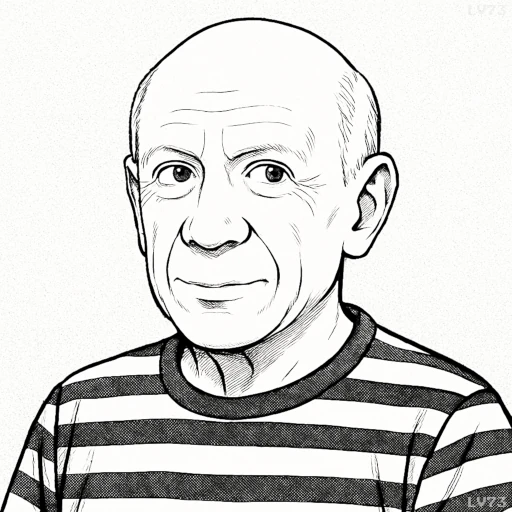“To finish a work? To finish a picture? What nonsense! To finish it means to be through with it, to kill it, to rid it of its soul, to give it its final blow the coup de grace for the painter as well as for the picture.”

- October 25, 1881 – April 8, 1973
- Born in Spain
- Painter, sculptor, printmaker
table of contents
Quote
“To finish a work? To finish a picture? What nonsense! To finish it means to be through with it, to kill it, to rid it of its soul, to give it its final blow the coup de grace for the painter as well as for the picture.”
Explanation
In this quote, Picasso challenges the idea of a painting or work of art being truly “finished.” For him, completion does not simply mean finalizing the artwork, but rather a process of ending its life and removing its vitality. The act of finishing a piece, according to Picasso, can lead to its stagnation, as it loses the dynamic energy and spontaneity that comes with continuous exploration and creation. Picasso’s own approach to art was one of constant evolution, often leaving works unfinished or in flux, as he believed that art should remain an ongoing process—alive and ever-changing. By declaring the completion of a painting as the “final blow,” he highlights the idea that true artistic creativity lies in the journey rather than in achieving a static, finished product.
This perspective is especially relevant in the modern art world, where many contemporary artists embrace the concept of the unfinished or open-ended work. Rather than seeing a painting or piece as something that must be perfectly resolved, artists today often leave their works with visible traces of the creative process, embracing the unfinished quality as a reflection of authenticity and impermanence. Picasso’s rejection of finality speaks to the idea that art is not about achieving a perfect end, but about continuously discovering and creating as the work evolves.
An example of this can be seen in the works of abstract artists like Mark Rothko, who left his large color fields open to interpretation, never fully “finishing” the emotional connection he intended to evoke. Similarly, contemporary artists like Damien Hirst or Jean-Michel Basquiat often leave their works in a state that reflects their ongoing exploration of themes such as identity, death, and life, acknowledging that there is no singular moment of completion. Picasso’s quote reminds us that, in art as in life, the process of creation should be fluid, with no definitive end, allowing for continuous discovery and meaning.
Would you like to share your impressions or related stories about this quote in the comments section?
